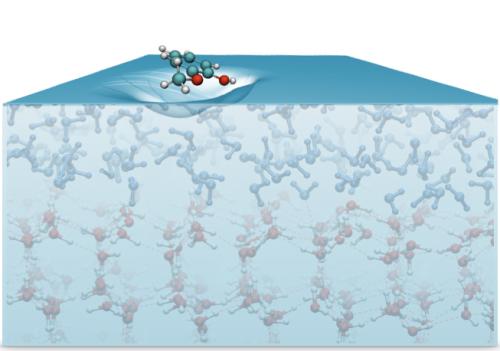
In the summer of 2011, former President Barack Obama's administration launched the Materials Genome Initiative intending to usher in a new “renaissance in American manufacturing.” A federal multi-agency project, the initiative aims to enable the discovery, manufacturing and deployment of advanced materials at double the speed and at a fraction of the cost of traditional methods by leveraging computational tools like machine learning, data aggregation and other techniques.
Such advances in materials science have revolutionized our technologies, from the lithium-based batteries in our smartphones to improving the efficiency of silicon-based solar cells. With the launch of the Materials Genome Initiative, the U.S. government made it clear that technological innovation hinges on advanced materials discovery.
“The idea is to leverage computers to do high-throughput calculations and map the materials in an analogous way to how biologists and biochemists mapped the human genome with the Human Genome Project,” said Davide Donadio, an expert in molecular modeling and a chemistry professor in the College of Letters and Science at UC Davis. “That steered research groups to produce huge amounts of data, store it and make it searchable.”
But materials discovery is just a facet of Donadio’s broad research portfolio. Molecular modeling projects in his lab run the gamut, from designing efficient materials for thermal to electrical energy conversion, to developing new theories and algorithms to model thermal transport in complex systems.
Donadio’s work in these realms has led to numerous scientific publications and accolades. For his contributions to the development and application of atomistic and first principle simulations to understand the physical properties of materials and nanostructures, Donadio was recently named a fellow of the American Physical Society.
“I’m very proud,” Donadio said. “The honor feels like an important step on a journey that started nearly 25 years ago.”

Beginnings in physics
Donadio’s research exemplifies the importance of multifaceted approaches to science, bolstering the idea that collaboration across disciplines is imperative to discovery. Though he’s a faculty member in the Department of Chemistry, Donadio’s professional foray into the sciences was via physics. During his undergraduate years at the University of Milan, he devoured the written works of Stephen Hawking and had a particular affinity for astrophysics.
As time went on though, Donadio found himself gravitating more toward materials science, specifically interested in both the theoretical and practical applications of the discipline. In 1998, he earned a Master of Science in physics and followed that with a doctoral degree in materials science from the University of Milan in 2003.
After graduation, Donadio secured a postdoctoral research position at ETH Zurich working with Michele Parrinello, a famed physicist known for his work in molecular dynamics.
“I was still doing molecular modeling but with completely different problems,” Donadio said. “I started getting interested in how materials crystallize and transform under extreme conditions.”
After that, Donadio joined the Galli Group at UC Davis as a staff scientist and started applying his background in molecular modeling to questions concerning energy conversion and transport. The research was a springboard to his later work developing and assessing the structural functionality of advanced materials.
He then went on to lead a research group at the Max Planck Institute for Polymer Research in Germany for five years. After a brief tenure in San Sebastian, Spain, as Ikerbasque Professor at the Donostia International Physics Center, he joined the UC Davis Department of Chemistry as a faculty member in 2015.
The surface of ice

In his professional life, Donadio adventures into the molecular and atomic worlds that underlie the material around us. But outside of the classroom, outside of the lab and the computer simulations, Donadio is also an adventurer.
A lifelong downhill skier and climber, he’s scaled mountain peaks just to turn around and carve paths in the snow while skiing down them. It’s a healthy dose of Type 2 Fun, a type of activity that’s strenuous in the moment but looked upon fondly in retrospect.
On top of getting Donadio’s adrenaline pumping, the physical activity has led to new research avenues for him and his lab.
“One of my big things right now is doing chemistry at the surface of ice and how the surface of ice can be thought of as a chemical catalyst in the environment,” Donadio said. “My interest in ice comes from snow and from me being a skier.”
By unraveling the surface chemistry of ice, Donadio and his team hope to better understand the molecular interactions that promote photodegradation of pollutants in clouds and snowpacks, and further, the formation of polar stratospheric clouds, which deplete the ozone layer.
Donadio’s broad research portfolio stems from his belief in the necessity for flexibility, something that’s allowed him to flourish in the sciences.
“What I’ve tried to do with my career is go with the flow and have fun,” said Donadio, noting that he’s often followed his instincts when it comes to decisions at professional crossroads.
“Be open to opportunities,” he said when asked what advice he’d give students. “Jump on opportunities."
After all, one never knows where such opportunities will lead. For Donadio, following an opportunity set him on a course that led to his fellowship status in the American Physical Society.
Images courtesy of Davide Donadio/UC Davis.
